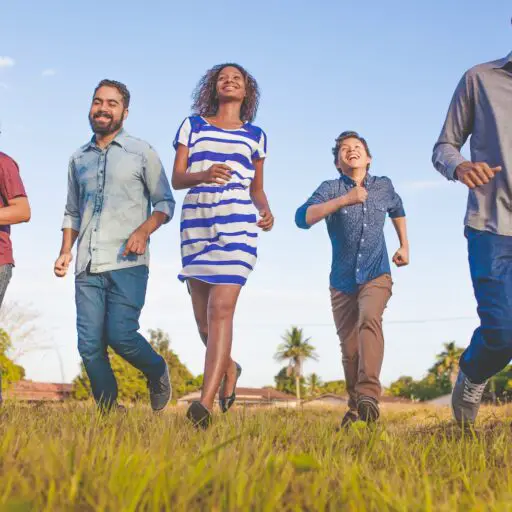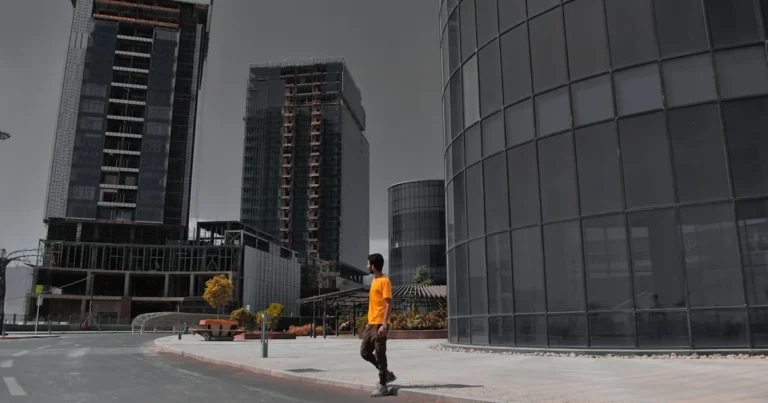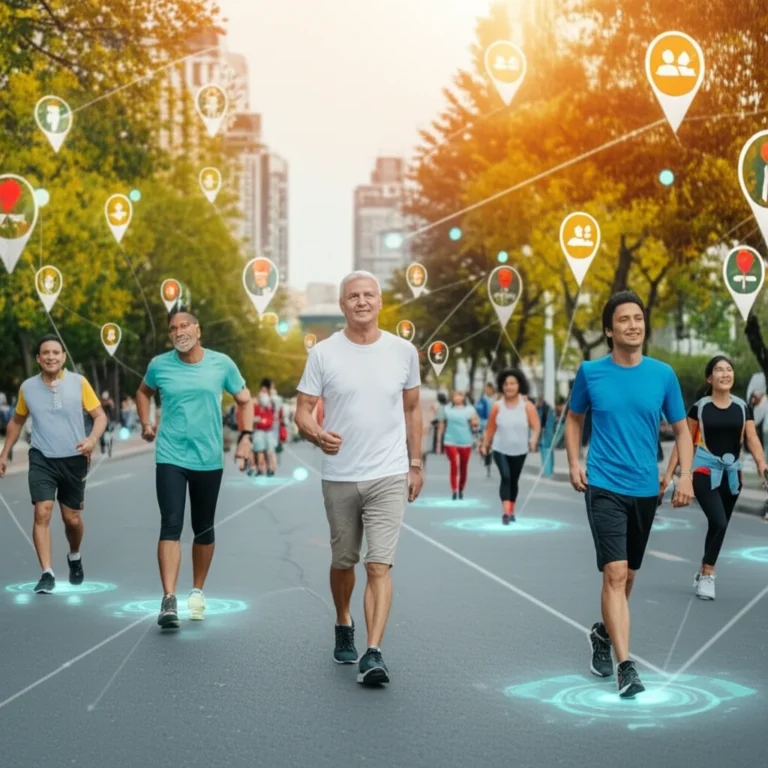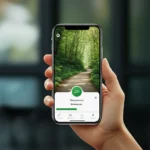Support our educational content for free when you purchase through links on our site. Learn more
What Is a Walkathon? 🚶♀️ Ultimate Guide & Top 10 Events (2025)
Have you ever wondered why millions of people worldwide lace up their sneakers and hit the pavement for a cause? A walkathon isn’t just a casual stroll—it’s a powerful movement combining community spirit, fundraising, and health benefits all rolled into one. From its humble beginnings with Ramón Rivero’s 80-mile trek in 1953 to today’s massive virtual events connecting walkers across the globe, walkathons have evolved into an inspiring way to make a difference—one step at a time.
Stick around, because later we’ll reveal the top 10 most famous walkathons worldwide, share insider tips on organizing your own successful event, and even bust some common myths you didn’t know about. Plus, we’ll introduce you to the future of walkathons—virtual participation—so you can join the cause no matter where you are!
Key Takeaways
- Walkathons are community-driven fundraising events where participants walk a set distance to support causes ranging from health to social justice.
- They offer inclusive participation for all ages and fitness levels, making them accessible and fun.
- The first charitable walkathon dates back to 1953, and the movement has since grown into a global phenomenon with millions of participants.
- Virtual walkathons are revolutionizing how people engage, offering flexibility and global reach.
- Proper preparation—including training, gear, and fundraising strategies—can maximize your impact and enjoyment.
- Explore our curated list of the Top 10 Famous Walkathons to find inspiration or your next event to join.
Ready to step up your walkathon game? Check out our expert-recommended gear to get started:
Table of Contents
- ⚡️ Quick Tips and Facts About Walkathons
- 🚶♂️ What Is a Walkathon? Definition and Purpose
- 📜 The Fascinating Origins and Evolution of Walkathons
- 🌍 Why Walkathons Matter: Social, Health, and Fundraising Impact
- 🏆 Top 10 Most Famous Walkathons Around the World
- 📝 How to Organize a Successful Walkathon: Step-by-Step Guide
- 👟 Best Gear and Shoes for Walkathons: Expert Recommendations
- motivation“>💡 Tips for Walkathon Participants: Training, Nutrition, and Motivation
- 📈 Walkathon Fundraising Strategies That Actually Work
- 🔍 Common Walkathon Myths Debunked
- 🌐 Walkathon Virtual™: The Future of Walkathons in a Digital World
- 🧠 The Science Behind Walking: Health Benefits Explored
- 📚 Walkathon Etymology and Linguistic Insights
- 🎉 Inspiring Walkathon Stories: Real-Life Successes and Anecdotes
- 🔗 Recommended Links for Walkathon Enthusiasts
- ❓ Frequently Asked Questions About Walkathons
- 📖 Reference Links and Further Reading
- 🏁 Conclusion: Why You Should Join or Organize a Walkathon Today
Here is the main content of the article, written according to your instructions.
⚡️ Quick Tips and Facts About Walkathons
Welcome to the wonderful world of walkathons! Before we dive deep, here are some quick tidbits to get you up to speed. We, the team at Walkathon Virtual™, live and breathe this stuff, so you’re in good hands!
- What is it? A walkathon is a fundraising event where you walk a set distance to raise money for a cause. Think of it as a marathon’s super-chill, friendly cousin. It’s a portmanteau of “walk” and “marathon“.
- Main Goal: The primary purpose is fundraising and raising awareness for charities and causes, from local schools to global health issues like cancer and AIDS.
- First of its Kind: The first known walkathon was a massive success in 1953 in Puerto Rico, where comedian Ramón Rivero walked 80 miles to raise money for the Puerto Rican League Against Cancer.
- Everyone is Welcome: Walkathons are designed for broad community participation. ✅ You don’t need to be an elite athlete! People of all ages and fitness levels can join in, making it a fantastic family or community event.
- Record-Breaking Feat: The largest charity walk ever recorded involved a staggering 519,521 participants across multiple venues in 24 hours! It was organized by Iglesia ni Cristo in 2014 to help those affected by Typhoon Haiyan. You can verify this amazing fact at Guinness World Records.
- Virtual is the New Reality: Can’t make it to an in-person event? No problem! Virtual walkathons let you participate from anywhere in the world, on your own schedule. We’ve even got tips on 12 Fun Ways to Make Your Virtual Walkathon Unforgettable (2025) 🚶♀️.
🚶♂️ What Is a Walkathon? Definition and Purpose
So, what exactly is a walkathon? At its core, a walkathon is “a long walk, especially one that is organized to raise money for a charity.” But honestly, that’s like saying a birthday cake is just flour and sugar—it misses the magic!
It’s a form of peer-to-peer fundraising where participants (like you!) sign up to walk a specific distance and ask their friends, family, and colleagues to sponsor them. This sponsorship can be a flat donation or a pledge per mile/kilometer walked. As the experts at 99Pledges put it, “Community members volunteer to raise funds on an organization’s behalf, walk a set distance, and then collect money for your cause.”
Unlike competitive marathons, most walkathons are non-competitive. The focus isn’t on who finishes first, but on:
- Community: Bringing people together for a shared purpose.
- Awareness: Shining a spotlight on important issues.
- Empowerment: Giving individuals a tangible way to make a difference.
- Health: Encouraging physical activity in a fun, low-pressure environment.
It’s a powerful blend of fitness, fundraising, and feel-good vibes!
📜 The Fascinating Origins and Evolution of Walkathons
Ever wonder how this brilliant idea got started? The history of walkathons is more fascinating than you might think! While the term “walkathon” was used in the 1930s for competitive dance marathons, the charitable walkathon we know and love has a more heartwarming origin story.
The Pioneer: Ramón “Diplo” Rivero
The first major charitable walkathon is widely credited to Puerto Rican actor and comedian Ramón Rivero, affectionately known as “Diplo.” In 1953, he embarked on an 80-mile walk from the capital city of San Juan to Ponce. His goal? To raise money for the Liga Puertorriqueña Contra el Cáncer (Puerto Rican League Against Cancer). Over four days, he captured the hearts of the nation and raised the equivalent of over $85,000 today—an incredible feat that cemented his place in history.
The Movement Reaches the US Mainland
The idea hopped over to the U.S. mainland in 1968. The American Freedom from Hunger Foundation sponsored the “International Walk for Development” in Minneapolis, Minnesota. Over 3,000 people walked a 33-mile route, inspired by sponsored walks in England and promoted by big names like Johnny Carson. This event sparked a nationwide movement.
By May 1971, the foundation coordinated a massive event with over 150,000 Americans walking in dozens of cities, raising over $1.2 million to fight hunger in a single day. From these humble beginnings, the walkathon has evolved into a global fundraising phenomenon for countless causes.
🌍 Why Walkathons Matter: Social, Health, and Fundraising Impact
Okay, so they have a cool history, but why should you care about walkathons today? Because their impact is HUGE. We see it every day with our virtual events. They create ripples of positive change in three key areas.
Social Impact 🤝
Walkathons are powerful community builders. They unite people from all walks of life under a single banner of hope and action. Whether you’re walking in memory of a loved one, in support of a friend, or simply for a cause you believe in, you’re part of a collective movement. This shared experience fosters a sense of belonging and solidarity that can be incredibly uplifting.
Health and Wellness Impact ❤️🩹
Let’s not forget the amazing physical and mental benefits! Walking is one of the most accessible forms of exercise. Participating in a walkathon gives you a fantastic goal to work towards, motivating you to get moving. Check out our deep dive into the Health Benefits of Walkathons for more on how it can boost your cardiovascular health, reduce stress, and improve your mood.
Fundraising Impact 💰
This is the big one. Walkathons are fundraising powerhouses. They provide a structured, engaging way for non-profits and schools to raise critical funds. The peer-to-peer model is especially effective because it leverages personal networks. A request for a donation from a friend is far more powerful than a generic email blast. For amazing ways to boost your own fundraising, explore our Fundraising Ideas.
🏆 Top 10 Most Famous Walkathons Around the World
Walkathons have gone global, with some events becoming iconic annual traditions. Here are ten of the most notable ones that have made a massive impact.
- Relay For Life (American Cancer Society): Perhaps the most famous of all, these overnight events celebrate cancer survivors, remember loved ones lost, and fight back against the disease. They are held in communities worldwide.
- AIDS Walk: Held in numerous cities like New York and Los Angeles, the AIDS Walk has raised hundreds of millions of dollars for HIV/AIDS programs and services since the 1980s.
- Susan G. Komen 3-Day: A challenging and deeply moving event where participants walk 60 miles over three days to raise funds for breast cancer research and patient support.
- March for Babies (March of Dimes): This event brings communities together to support the health of moms and babies, funding research, advocacy, and programs.
- Walk to End Alzheimer’s (Alzheimer’s Association): The world’s largest event to raise awareness and funds for Alzheimer’s care, support, and research. Participants carry flowers of different colors, each representing their connection to the disease.
- Light The Night (Leukemia & Lymphoma Society): An inspiring evening walk where participants carry illuminated lanterns—white for survivors, red for supporters, and gold in memory of loved ones lost to blood cancer.
- JDRF One Walk: JDRF’s flagship fundraising event and the largest type 1 diabetes (T1D) event in the world, raising money for T1D research.
- MS Challenge Walk (National MS Society): A multi-day, long-distance walk that pushes participants physically while raising significant funds to find a cure for multiple sclerosis.
- Out of the Darkness Community Walks (American Foundation for Suicide Prevention): These walks fund research, education, advocacy, and support for those affected by suicide.
- The Oxfam Trailwalker: A challenging global event where teams of four walk 100km in under 48 hours to fight poverty and injustice around the world.
Feeling inspired? You can find events happening all over the globe in our Global Walkathon Events category.
📝 How to Organize a Successful Walkathon: Step-by-Step Guide
Thinking of hosting your own walkathon? Go for it! It’s a rewarding experience. But as with any event, planning is key. Here’s our step-by-step guide, based on industry best practices and our own experience at Walkathon Virtual™.
Step 1: Define Your “Why” and Set a Goal
First things first: what are you raising money for? Be specific! “Raising money for new library books” is more compelling than “raising money for the school.” Then, set a clear, ambitious, but achievable fundraising goal. This will motivate everyone involved.
Step 2: Plan the Logistics (The 5 W’s)
- Who: Who is your target audience? Students? The whole community?
- What: What’s the distance? A 5K (3.1 miles) is a popular and accessible choice.
- Where: Choose a safe and scenic route. A local park, school track, or quiet neighborhood are great options. Don’t forget to get any necessary permits!
- When: Pick a date and time with good weather potential. Have a backup plan for rain!
- Why: This is your cause! Keep it front and center in all your communications.
Step 3: Choose the Right Fundraising Platform
Gone are the days of paper pledge forms. Using an online platform is a must. It makes it easy for participants to create personal fundraising pages and for donors to give securely. Look for software with:
- ✅ Easy setup and shareable pages.
- ✅ Multiple payment options (Credit Card, PayPal, etc.).
- ✅ Robust tracking and reporting features.
Step 4: Promote, Promote, Promote!
You can’t have a walkathon without walkers! Spread the word far and wide. Use a multi-channel approach:
- Email: Reach out to your organization’s mailing list.
- Social Media: Create an event page and share compelling stories and updates.
- Local Media: Send a press release to local newspapers and radio stations.
- Flyers: Post them in community hubs.
For more great strategies, check out our Event Promotion section.
Step 5: Make Event Day Awesome
This is where the magic happens! Ensure a smooth and fun experience for everyone.
- Volunteers: Recruit enough help for registration, water stations, and route guidance.
- Signage: Clearly mark the route.
- Hydration & Snacks: Have water stations along the way and some light snacks at the finish line.
- Entertainment: Music, a photo booth, or a post-walk celebration can add to the fun.
Step 6: Follow Up and Say Thank You!
After the last walker crosses the finish line, your job isn’t done. Send a heartfelt thank you to all participants, donors, and volunteers. Share the final fundraising total to show everyone the incredible impact they made. This builds goodwill and ensures they’ll be back next year!
👟 Best Gear and Shoes for Walkathons: Expert Recommendations
“It’s just walking,” you say. “I’ll just wear my old sneakers.” Hold on there! As trainers, we can tell you that the right gear can be the difference between a joyful walk and a blister-filled nightmare. Your feet are your most important asset, so let’s treat them right.
The Sole of the Matter: Choosing the Right Shoes
You don’t need elite running shoes, but you do need footwear that provides good cushioning, support, and breathability. Look for dedicated walking shoes or well-cushioned neutral running shoes.
Here are a few of our team’s favorites:
| Shoe Model | Overall Rating (1-10) | Cushioning | Support | Best For |
|---|---|---|---|---|
| Brooks Ghost | 9.5 | High | Neutral | All-around comfort and reliability |
| Hoka Bondi | 9.0 | Maximum | Neutral | Walkers who want ultimate plushness |
| New Balance Fresh Foam 880 | 8.5 | Medium-High | Neutral | A durable, workhorse shoe for daily walking |
| ASICS GEL-Kayano | 8.5 | High | Stability | Walkers who need extra support for overpronation |
Pro Tip: Go to a specialty running/walking store to get properly fitted. Your feet can swell during exercise, so it’s often recommended to buy shoes that are a half-size larger than your casual shoes.
👉 Shop Our Top Walking Shoe Picks:
- Brooks Ghost: Amazon | Brooks Running Official Website
- Hoka Bondi: Amazon | Hoka Official Website
- New Balance 880: Amazon | New Balance Official Website
- ASICS GEL-Kayano: Amazon | ASICS Official Website
Beyond the Shoes: Apparel and Accessories
- Socks: This is not the place for cotton! Invest in sweat-wicking socks made from synthetic materials or merino wool to prevent blisters. Brands like Balega and Feetures are fantastic.
- Clothing: Choose comfortable, moisture-wicking fabrics. Think technical shirts and shorts/leggings from brands like Lululemon, Athleta, or Nike. Avoid anything that might chafe.
- Sun Protection: A hat, sunglasses, and broad-spectrum sunscreen are non-negotiable for an outdoor event.
- Hydration Pack/Bottle: While there will be water stations, carrying your own bottle or a small hydration pack can be convenient.
💡 Tips for Walkathon Participants: Training, Nutrition, and Motivation
Ready to crush your walkathon? A little preparation goes a long way. Here are our top tips to get you to the starting line—and across the finish line—feeling great.
Your 4-Week Walkathon Training Plan (for a 5K)
Even if you’re a regular walker, it’s smart to follow a simple plan to build endurance.
| Week | Day 1 | Day 2 | Day 3 | Day 4 |
|---|---|---|---|---|
| Week 1 | 20 min walk | Rest | 25 min walk | Rest |
| Week 2 | 25 min walk | Rest | 30 min walk | Rest |
| Week 3 | 30 min walk | Rest | 35 min walk | Rest |
| Week 4 | 20 min walk | Rest | Event Day! | Celebrate! |
Key: Walk at a comfortable, brisk pace where you can still hold a conversation.
Fueling Your Walk: Simple Nutrition Tips
- Hydrate, Hydrate, Hydrate: Drink plenty of water in the days leading up to the event.
- The Day Before: Eat a balanced meal rich in complex carbohydrates (like pasta or brown rice) to top up your energy stores.
- Morning Of: Have a light, easily digestible breakfast 1-2 hours before the walk. A banana with peanut butter or a small bowl of oatmeal is perfect. Avoid heavy, fatty foods.
- During the Walk: Sip water at every aid station. If your walk is longer than 90 minutes, consider an electrolyte drink or a small snack like a granola bar.
Staying Motivated
- Find Your “Why”: Constantly remind yourself of the cause you’re supporting.
- Walk with a Buddy: Training is always more fun with a friend!
- Create a Playlist: A great playlist can make the miles fly by.
- Track Your Progress: Use an app like Strava or a fitness watch to see how far you’ve come. It’s a great motivator!
📈 Walkathon Fundraising Strategies That Actually Work
Asking for money can feel awkward, but it doesn’t have to be! The key is to make it personal and easy for people to donate.
- Tell Your Story: On your fundraising page, share why you’re walking. Is there a personal connection to the cause? People give to people, not just to organizations.
- Make the First Donation: Kickstart your campaign by donating to your own page. It shows you’re committed and sets the bar for others.
- Leverage Social Media: Share your fundraising link on Facebook, Instagram, and Twitter. Post updates on your training to keep your supporters engaged.
- Email is Your Best Friend: Send personalized emails to close friends and family. This is often more effective than a blanket social media post.
- Ask for Corporate Matching: Many companies will match their employees’ charitable donations. It’s an easy way to double your impact! Check if your workplace has a matching gift program.
- Get Creative: Host a bake sale, offer to pet-sit, or create a “dare” for reaching a certain fundraising milestone (like dyeing your hair a crazy color!). Find more inspiration in our Fundraising Ideas section.
🔍 Common Walkathon Myths Debunked
There’s a lot of misinformation out there about walkathons. Let’s clear a few things up, shall we?
- Myth 1: You don’t need to train for a walkathon.
- ❌ False! While you don’t need to be a super athlete, training is crucial. It helps prevent injuries like shin splints and blisters, builds your endurance, and makes the event day experience much more enjoyable.
- Myth 2: Walkathons are only for serious athletes.
- ❌ Totally False! This is the biggest misconception. Walkathons are designed to be inclusive. You’ll see everyone from toddlers in strollers to grandparents, all walking at their own pace. It’s all about participation, not speed. For more on this, see our articles on Accessibility in Walkathons.
- Myth 3: You have to raise thousands of dollars to participate.
- ❌ Nope. Most events have a low fundraising minimum or none at all. Every single dollar counts, and organizations are grateful for any amount you can raise.
- Myth 4: Walking isn’t “real” exercise.
- ✅ Definitely False! Brisk walking is a fantastic form of cardiovascular exercise with proven health benefits, as recognized by organizations like the World Health Organization. It’s easier on the joints than running and is a sustainable activity for a lifetime.
🌐 Walkathon Virtual™: The Future of Walkathons in a Digital World
What if you could walk for a cause you love, but on your own terms? That’s the beauty of a virtual walkathon! Here at Walkathon Virtual™, we believe this is the future of fundraising.
What is a Virtual Walkathon?
A virtual walkathon is an event you can participate in from any location you choose. You get to walk on your own time, at your own pace, and on your own route—whether it’s on a treadmill, in your neighborhood, or on a scenic hiking trail. You use a fitness app or device to track your distance and share your progress online.
Why Go Virtual?
- Flexibility: No travel required. No need to wake up at the crack of dawn for a specific start time. You fit the walk into your schedule.
- Accessibility: It opens up the event to people who might not be able to attend an in-person walk due to location, health, or scheduling conflicts.
- Global Reach: Your friends and family from all over the world can join your team and participate from their own hometowns.
- Safety: It’s a great way to support a cause while maintaining social distance.
We’re passionate about making these events as engaging as possible. Check out our guide on 12 Fun Ways to Make Your Virtual Walkathon Unforgettable to see how we’re shaking things up!
🧠 The Science Behind Walking: Health Benefits Explored
We’ve talked about the fun and fundraising, but let’s geek out for a minute on what walking actually does for your body and mind. The science is clear: walking is a health superstar.
According to the Mayo Clinic, regular brisk walking can help you:
- Maintain a healthy weight and lose body fat.
- Prevent or manage various conditions, including heart disease, stroke, high blood pressure, and type 2 diabetes.
- Strengthen your bones and muscles.
- Improve your mood, cognition, memory, and sleep.
- Boost your immune system.
From a Brisk Walk to an Olympic Sport
Think walking can’t be intense? Think again! Just look at the sport of racewalking. As you can see in the video we’ve featured, it’s an incredibly demanding Olympic discipline with very strict rules.
Athletes must follow two key principles:
- One foot must always be in contact with the ground.
- The advancing leg must be straightened from the moment it touches the ground until the body passes over it.
Judges watch like hawks, and three violations get you disqualified! Racewalkers wear specialized, flexible shoes and sweat-wicking gear to optimize their performance. It’s a powerful reminder that walking can be anything from a relaxing stroll to a high-intensity athletic competition.
📚 Walkathon Etymology and Linguistic Insights
Ever wondered where the word “walkathon” came from? It’s a classic example of a portmanteau, which is a fancy word for blending two words (and their meanings) into one.
Walk + Marathon = Walkathon
The term cleverly combines the accessibility of “walking” with the endurance and sense of achievement associated with a “marathon.” It perfectly captures the spirit of the event: a long-distance walk that’s more about participation and fundraising than a race against the clock. It’s a friendly, welcoming word for a friendly, welcoming event!
🎉 Inspiring Walkathon Stories: Real-Life Successes and Anecdotes
At Walkathon Virtual™, we get to see incredible stories unfold every day. Let us tell you about one that always sticks with us.
Meet the “Johnson Family Team,” led by a grandmother named Carol. Her grandson, Leo, was diagnosed with a rare genetic disorder. Feeling helpless, Carol decided to organize a virtual walkathon to raise money for the small foundation dedicated to researching the disorder.
She had a modest goal. She just wanted to contribute something. She sent emails to friends and family, sharing Leo’s story with honesty and heart. Her daughter, a graphic designer, created a simple logo for “Leo’s Lifeline.”
What happened next was amazing. Her email was forwarded. Then forwarded again. People who had never met Leo were touched by his story. A local news blogger wrote a short piece about it. Soon, donations were pouring in from strangers across the country. Over 200 people signed up to walk “with” Leo in their own neighborhoods, from Seattle to Miami.
By the end of the month, Carol’s small family team had raised over fifty thousand dollars. But more than that, they had built a community. They received messages of support from other families affected by the same disorder, who no longer felt so alone.
That’s the power of a walkathon. It starts with a single step, a single story, and it can grow into a movement that changes lives. What story will you start?
🏁 Conclusion: Why You Should Join or Organize a Walkathon Today
So, what’s the final word on walkathons? They are more than just a walk—they’re a powerful blend of community spirit, health benefits, and fundraising magic. Whether you’re a seasoned athlete, a casual stroller, or someone who just wants to make a difference, walkathons offer a welcoming, accessible way to get involved.
We’ve seen how a simple idea—walking for a cause—has evolved into a global movement that raises millions, builds communities, and changes lives. From Ramón Rivero’s historic 80-mile trek in Puerto Rico to the massive virtual events happening today, walkathons prove that every step counts.
If you’re thinking about organizing one, remember: with clear goals, smart planning, and the right tools, you can create an event that inspires and uplifts. And if you’re a participant, prepare well, choose your gear wisely, and embrace the journey—both physical and emotional.
Still wondering if you should join? Ask yourself: What story will you start? Because every walkathon is a chance to step up, stand out, and make a real impact.
🔗 Recommended Links for Walkathon Enthusiasts
Ready to gear up and get moving? Here are some of our top product picks and resources to help you on your walkathon journey.
Shoes & Gear
-
Brooks Ghost:
Amazon | Brooks Running Official Website -
Hoka Bondi:
Amazon | Hoka Official Website -
New Balance Fresh Foam 880:
Amazon | New Balance Official Website -
ASICS GEL-Kayano:
Amazon | ASICS Official Website -
Balega Socks:
Amazon -
Feetures Socks:
Amazon
Books to Inspire Your Walkathon Journey
- The Power of Walking: How to Improve Your Health and Wellbeing by Dr. James O. Hill — Amazon Link
- Fundraising for Dummies by Beverly A. Browning — Amazon Link
- Virtual Fundraising: How to Raise Money Online by Heather Mansfield — Amazon Link
❓ Frequently Asked Questions About Walkathons
How do virtual walkathons work?
Virtual walkathons let you participate remotely, walking your chosen distance anywhere and anytime within the event window. You track your progress using fitness apps or devices like Fitbit, Apple Watch, or Strava. Participants share updates and fundraising pages online to engage supporters globally. This format offers flexibility, accessibility, and safety, especially important in today’s world. Platforms like Walkathon Virtual™ provide tools to register, fundraise, and connect with fellow walkers virtually.
What are the benefits of participating in a walkathon?
Participating in a walkathon offers a trifecta of benefits:
- Physical Health: Walking improves cardiovascular fitness, strengthens muscles, and boosts mental health.
- Social Connection: Walkathons unite people around a common cause, fostering community and support.
- Fundraising Impact: Your participation helps raise vital funds and awareness for important causes, from cancer research to hunger relief.
Plus, it’s fun and fulfilling! You get to challenge yourself while making a difference.
How can I join a virtual walkathon from home?
Joining is simple:
- Find a virtual walkathon event through platforms like Walkathon Virtual™, charity websites, or social media.
- Register online and set up your fundraising page.
- Train and walk your chosen distance within the event timeframe.
- Track and submit your distance using a fitness app or device.
- Share your progress and fundraising page with friends and family to collect donations.
Virtual events often include online communities, challenges, and incentives to keep you motivated.
What causes do walkathons typically support?
Walkathons support a wide range of causes, including but not limited to:
- Health-related causes: Cancer, AIDS/HIV, diabetes, Alzheimer’s, multiple sclerosis, and mental health.
- Social issues: Hunger relief, poverty alleviation, education, and disaster relief.
- Community and school projects: Library funding, playgrounds, scholarships, and local charities.
The versatility of walkathons makes them a popular choice for organizations big and small.
How can I maximize my fundraising success?
- Tell your personal story to connect emotionally with donors.
- Use online fundraising platforms for easy sharing and donation processing.
- Leverage social media and email to reach wider audiences.
- Offer incentives like shout-outs or small rewards.
- Engage your network with regular updates and thank-yous.
For more detailed strategies, check out our Fundraising Ideas section.
📖 Reference Links and Further Reading
- Wikipedia: Walkathon — Comprehensive history and notable events.
- 99Pledges: Walk-a-thon Fundraiser Guide — Practical tips for organizing and fundraising.
- Cambridge Dictionary: Walkathon Definition — Official English meaning.
- Guinness World Records: Largest Charity Walk — Record-breaking walkathon details.
- Mayo Clinic: Health Benefits of Walking — Science-backed health insights.
- World Health Organization: Physical Activity Facts — Global recommendations on physical activity.
- Brooks Running: Official Site
- Hoka One One: Official Site
- New Balance: Official Site
- ASICS: Official Site
Thanks for walking through this comprehensive guide with us! Ready to lace up and make a difference? We’re cheering you on every step of the way. 🚶♂️💪







